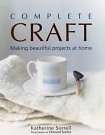Well hello there, dear old blogspot. Do you remember me?
To kick start 2015, I thought I'd pop in and share a long overdue post about my first experiements with precious metal clay. I had a mini-obsession with this stuff early last year and my first project was this silver flower pendant.
For anyone curious, metal clay is essentially powdered metal (in this case silver) held together with a binder that makes it behave like a clay.
You can buy it in tiny little quantities of 5 or 10 grams and make your own custom jewellery items such as pendants, charms, rings and even bracelets. You can also get it in syringes for fine work and in paste form, which is useful for making repairs and 'glueing' bits of clay together before firing.
When it comes out of the packet, you'd never know it was made of silver as it's a greyish white colour and behaves a lot like an ordinary clay. You can roll it out and shape it into anything of your choosing and I suspect anyone who's good at sugarcraft would find metal clay a breeze. (I used sugarcrafting tools to help with the cutting and shaping of this piece.)
A word of warning is that it does want to dry out very quickly. I found the trickiest element overall was having to model my fiddly flower shape at speed.
Because I was making a pendant, I punched a hole in the middle of the flower so that I could feed through a sterling silver wire, which was attached at the back to a silver hanging loop. These were secured in place to the main flower shape using silver clay paste.
Once I was happy with the flower shape, I let it air dry on a piece of mesh before firing it on my gas hob for a few minutes.
Incidentally, I advise NOT dropping it en route to the hob. This stuff is more fragile than an egg-shell and I ended up making so many repairs to my piece with watered-down silver paste that I might as well have started again.
Firing is where the magic happens. The binder burns away and, before you know it, your clay has turned into a piece of solid silver. (For those who don't have a gas hob, you can also use a blowtorch).
You can't tell that it has become silver straight away, as it still looks white and chalky, but as long as you've followed the instructions and fired for the right number of minutes, have faith and take it off the hob. I picked my piece up with tweezers and left it to cool for a few minutes before burnishing. If you drop it at this point, it will go "clang" like a piece of metal (ask me how I know)
Burnishing is the final step. This is where you rub the fired piece all over using a metal object, which can be anything from a special burnishing tool to a large paperclip. As soon as you start, you'll begin to see the silver sheen revealing itself, which is rather exciting.
The more you burnish, the shinier your finished piece will be.
Once mine was polished to a high shine all over, my final touch was to trim the piece of silver wire that was sticking out of the front so that it was just long enough to hold a freshwater pearl bead, which I secured using jewellery glue and this now forms the centre of the flower.
I must confess that it's been a year or so since I sent my metal clay and its paraphernalia up to the hobby graveyard (aka the loft) but I fully intend to get it back out again at some point.































